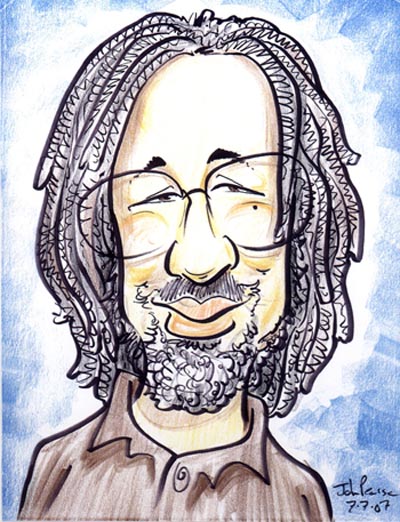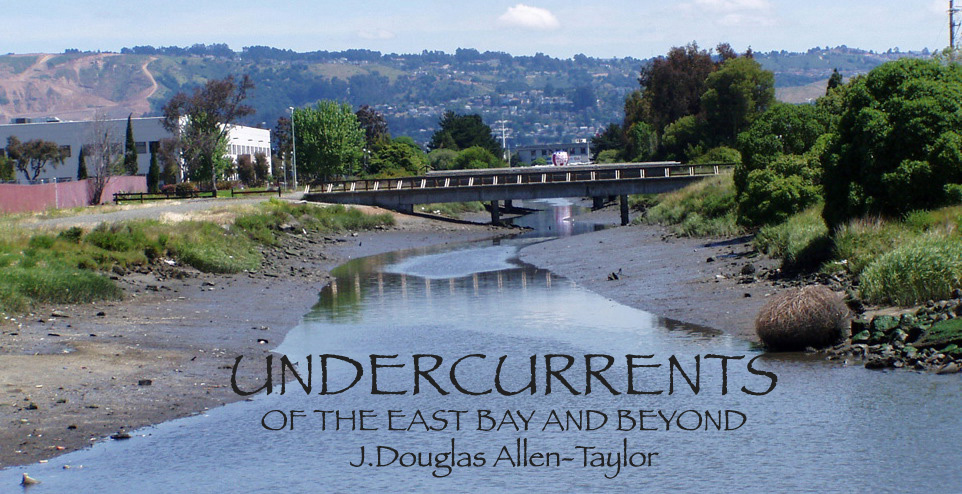|
|
WHAT DIVIDES OAKLAND'S CURRENT DEBATES
February 22 , 2008
One of the reasons that three of the most pressing issues currently on Oakland’s city agenda—crime and violence, industrial zoning preservation vs. residential or commercial development, and affordable housing—are so naggingly difficult to settle is that, while there is an underlying current that runs through all of them and ties them all together, there is reluctance to talk engage that debate in the open.
More than the question of what Oakland will look like in the next thirty years, or what type of conditions will exist in the city, is the issue of who will live in Oakland. Some folks think that the city ought to get a do-over to benefit the people who currently live here. Some, on the other hand, believe that the city can only be rebuilt if some percentage of the existing residents let the doorknob hit them in the back.
Some history.
Oakland prides itself on its diversity, but rarely do we talk about that fact that this diversity was by no means the result of enlightened city planning. It came about because a good many of our good white friends fled the city in the postwar years after darker folk began moving into the neighborhood.
Chinese laborers came into California with the building of the transcontinental railroad in the late 19th century. Many of them moved into Oakland at the end of the line, but were confined in the area just off downtown that we continue to identify as Chinatown. A pocket of African-American residents got a foothold in West Oakland in the early part of the 20th century, and that became Oakland’s traditional black neighborhood, a middle class/working class community where my grandmother—in Berkeley—used to say that “the best people lived.” But until World War II, the rest of Oakland was white.
That all changed with the great black migration to California to fill the jobs in the wartime shipbuilding industries. African-Americans flooded into the Bay Area from Arkansas and Texas and Louisiana, and while the nation wanted their labor to help defeat the Axis powers, most existing East Bay neighborhoods resisted having these Black homeland workers move in next to them. When my newlywed parents—both of whom were born and raised in the East Bay—tried to buy a house in deep East Oakland some blocks from where my father’s uncle lived, they found that the neighborhood operated on unwritten restrictive covenants, where homeowners had loose agreements that they would never sell to African-Americans. Most of the neighbors—it’s redundant to say “white neighbors” because all of the neighborhood was white—shunned my parents when they finally were able to secure a house.
Defeated in their efforts to keep African-Americans out, our white neighbors decided to move out themselves. That turnover happened during the years I was growing up, as I watched the families of friends and playmates pack up, one by one, and move across the hills into the Eastern Contra Costa cities of Concord and Walnut Creek and beyond. Oakland went from majority white to majority Black. Eventually, that opened the door to the following migrations into the city, first Latinos, and then the rest of the world.
Popular mythology is that the wartime Black migration is what “did in” Oakland, turned it from the pleasant, spread-out working class community of the 40’s into the crowded, crime and violence haven of today. Like most popular mythology it has some truth to it, but with some explanations.
The first Black Oakland immigrants of the war years came for the wartime jobs. When the war ended, they took other industrial work. At the canneries—which had previously restricted Black workers—at the auto plant, at the cookie and potato chip factories. Many of them came with the dream of home ownership, and there was a great activity of Black homebuying in Oakland—particularly in East Oakland—postwar.
Had conditions remained the same in Oakland, East Oakland would have retained the same family-friendly, country-town like atmosphere of single family homes and broad front and backyards that you see in many of the East Bay suburbs, with the exception that East Oakland would have been Black, while the suburbs were white. But conditions did not remain the same.
For one thing, City Council interest in maintaining the single-family-home atmosphere of East Oakland waned with the interest of developers and the out-migration of whites, so that it became easier in the 50’s and 60’s to overbuild, leading to the depressed and overcrowded conditions of today. At the same time, it seemed like anyone who wanted to could open up a liquor outlet in the flatlands east of High Street, filling the city’s tax coffers, but depressing and ghettoizing the neighborhood. The city did little or nothing to counteract the closing down or moving out of the industrial jobs, so that the children of the original Black immigrants could find less and less places to work. Thinking that downtown Oakland would never die, city officials did not cash in on the mall boom of the 70’s, so that when downtown did die, Oakland retail was left out in the cold. Many of the original Black homeowner East Oakland immigrants abandoned the neighborhood themselves, first for the East Oakland hills, and then following their white neighbors across the hills into the valley.
West Oakland suffered a similar fate as the city’s redevelopment actions drove out the Black middle class and turned what had been one of Oakland’s best neighborhoods into one of its most dilapidated, neglected, and run-down.
But Oakland is not easily abandoned.
The city occupies a strategic location—perhaps the strategic location—in the Bay Area, the a transportation hub and link between San Francisco’s commerce and Pacific gateway and California’s agriculture valley and the American markets beyond. It is a city of overwhelming beauty, with a Mediterranean climate, spectacular views of the bay, and quick access to the eastern hills and woodlands. Within a half an hour to forty five minutes from the heart of the city, you can be in San Francisco, or Silicon Valley, or the wine country. No city in Northern California is positioned better.
But Oakland is a depressed city, floundering when its younger siblings and offshoots all around it are thriving. Major retail is almost nonexistent. It’s schools have been in shambles for years, the object of a state takeover. Most of the old-time industrial jobs have long since vanished. Crime and violence seems almost out of control.
Coming out of the devastation of the Loma Prieta earthquake—which hit Oakland harder than is popularly acknowledged—the city is experiencing a slow and tentative renaissance. But that brings us to the underlying and mostly-unspoken question that lines the major city debates of the day. Should that renaissance go to the benefit of the people currently living in Oakland, who have suffered through its hardest times? Or is that renaissance possible only if some percentage of those residents—small or large—is forced out of the city and others more desirable come in to take their place?
Whether or not it leads to a renaissance, the latter scenario has already been taking place. The city is being slowly—and sometimes rapidly—drained of its African-American population, so that the East Bay is in danger—in the future—of taking on the atmosphere of South Africa under apartheid, with communities like Pittsburg and Antioch and Modesto and Stockton serving as the Bantustans.
And some people in Oakland, consciously or unconsciously, are encouraging such a turnover.
You hear it in the affordable housing discussion, when some imply that rental housing leads to high crime. It can lead to high turnover in neighborhoods, which can, in turn, lead to instability and a lack of investment of many residents in the future of their neighborhood and that, in turn, can help lead to high crime rates. But the unspoken implication is that rental housing is bad in and of itself, a supposition that would throw many moderate and lower income residents out of Oakland and leave it a city of mostly those who can afford to buy their homes.
You also hear it in some of the direct discussions over crime and violence, where anger against those perpetrating violent crimes is sometimes substituted for something which is called a “culture of crime.” That always worries me, especially when the description of that “culture of crime” begins to morph over into complaints about style of dress, types of cars driven and how they are driven, and types of music listened to. These become code words for attacks on an entire hip hop generation of dark-skinned youth.
Oakland cannot be a medieval city with a wall surrounding that keeps outsiders out, and insiders in. Like all dynamic cities, we are always going to be in some level of population flux. There is an enormous influx, at the present, of Latino newcomers, coming for the same reason the rest of us came, because they have family here or it seems like a good place to get work and live, and the city is going to have to make accommodations for them. But having more Latino newcomers in—which is to be welcomed—does not mean that others who are currently living here need to be—or should be—pushed out. And that is the same for the grandsons and granddaughters of my old white East Oakland neighbors, who left the city on the heels of the black horde, and now look longingly to come back. It’s good that they’re excited about Oakland again, but only on the condition that “coming back” does not equate to “taking back.” We’ve got to make room for all of us, including those of us who stayed.
Somewhere in the midst of these debates, we are going to have to talk openly about what is really dividing us in Oakland, and decide what type of city we really want to live in, and which direction we are going to go.
|

